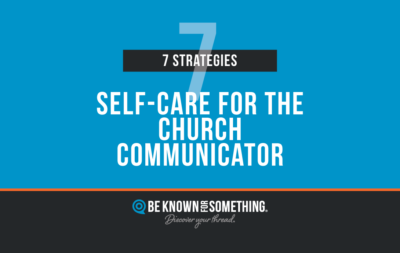When leading a ministry online, there are many differences from leading an in-person ministry. Don’t be fooled like many Pastors who, during COVID especially, decided it’s as simple as putting a video on your website. All while running church, as usual, in the building.
Leading a ministry online adds several complexities since most of our churches started without any web presence. Over time, most churches added a website to their ministry mix, then website functionality, and finally started to think about a true digital ministry hub.
From a communication vantage point, here are 5 tips that will help you when doing ministry online well:
- Know the potential of a targeted audience. In the building, you’re limited to who can drive or walk to your campus. It’s fairly easy to get demographic information for that reach area in order to “know” those people. But when leading a ministry online, there’s a much greater reach. The internet extends your potential to the world! But be careful: if you try to reach “everyone” you’ll end up reaching nobody. Best practice: study your local reach area, discover who they are stereotypically, and then try to reach personas like them throughout the region and world.
- Someone needs to focus on the online audience. If you’re setting up additional campuses, the main campus understands the other sites need leadership. Leading a ministry online is like creating a huge campus with lots of potential. So, it needs leadership! Best practice: the person focusing on your ministry online needs to love the digital world. They will enjoy texting, emailing, and messaging people to develop relationships. Bonus: they will have an insatiable desire for analytical data; from keyword research to website conversion rates.
- Create segmented lists. There’s never a better time to do this than now. You know you must create a digital list of your members and people interested in your church. It’s your way of contacting people effectively in the digital space (how most want the engagement). But your targeted audience will most likely be 2 – 4 persona groups (stereotypical groupings) with different needs that require different solutions. If you want better engagement (open rates) then don’t send one message to everyone. You’ll end up with disinterested people. Best practice: have lead generation areas on your website so the online audience can fill out a simple form and select from a dropdown of what best describes them. This allows self-segmenting by adding a tag to their contact information when they submit the form.
- Create online ministry options to match in-person pipeline. Everyone participating online can’t attend in-person. Stop having that as your goal! Instead, as a best practice: create the best possible way to step people towards true repentance and Christ-following. Make it similar to your in-person pipeline if possible (for continuity). Decide and build how many steps you may need online (e.g. guest online, regular online attender, online group attendance, one-on-one online discipleship, personal commitment, online tither, online volunteer). Then promote those steps online and in-person.
- Warning! In-person holds attention longer than online. If you expect to simply repurpose videos from in-person meetings online, you’ll have difficulty getting an online audience to watch for that amount of time. Best practice: edit all your content. Or segment things so people can watch for smaller increments of time. Be careful about having your online sessions the same length as your in-person meetings. Doing online group meetings? Consider doing them shorter than what you’re doing in the building.





